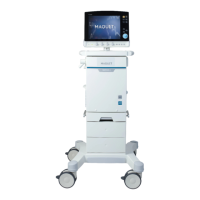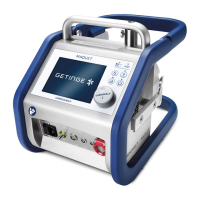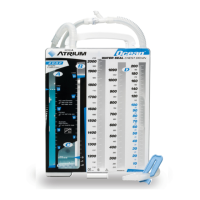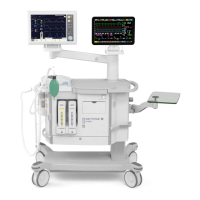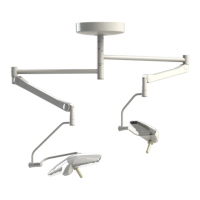9.1.1 System alarms overview
The system has a number of alarms to alert
the staff of changes in patient condition or
possible system malfunctions.
Alarms are visually displayed on the screen.
With each alarm, a sound is also emitted from
the system, indicating the severity of the
alarm.
The alarm sound will cease once the alarm
condition is no longer valid.
Each alarm is divided into groups of priority
(see below). Each group has a characteristic
sound associated with it, and is displayed in
the alarm message area using color to reflect
the severity of the alarm.
Similarly, parameters affected by active alarms
are highlighted in the ventilation and gas
measurement area using the same color
scheme.
Two classes of alarms exist:
1. Clinical alarms
2. Technical alarms
Clinical and technical alarms are divided into
groups of priority:
• High priority alarm (black text on red
background, flashing)
• Medium priority alarm (black text on yellow
background, flashing)
• Low priority alarm (black text on blue
background)
Clinical alarms are related to the status and
near surroundings of the patient. These can
be corrected by the operator.
Technical alarms are activated when a
technical error requiring the operators
attention occurs.
All technical alarms are displayed using the
prefix 'TE' along with a reference number
linked to the specific problem, e.g. 'TE12:
Ventilation error'.
FLOW-i 4.2, User's Manual
185
| Alarms and patient safety |
9 |
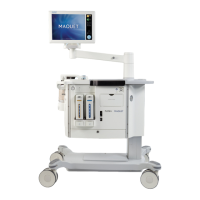
